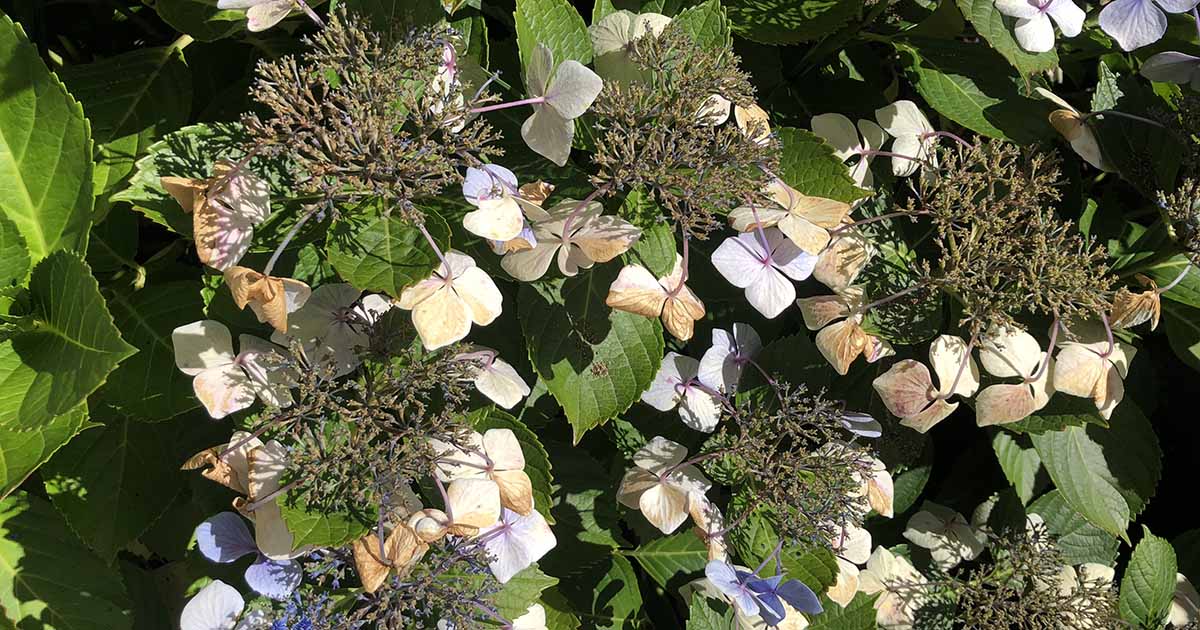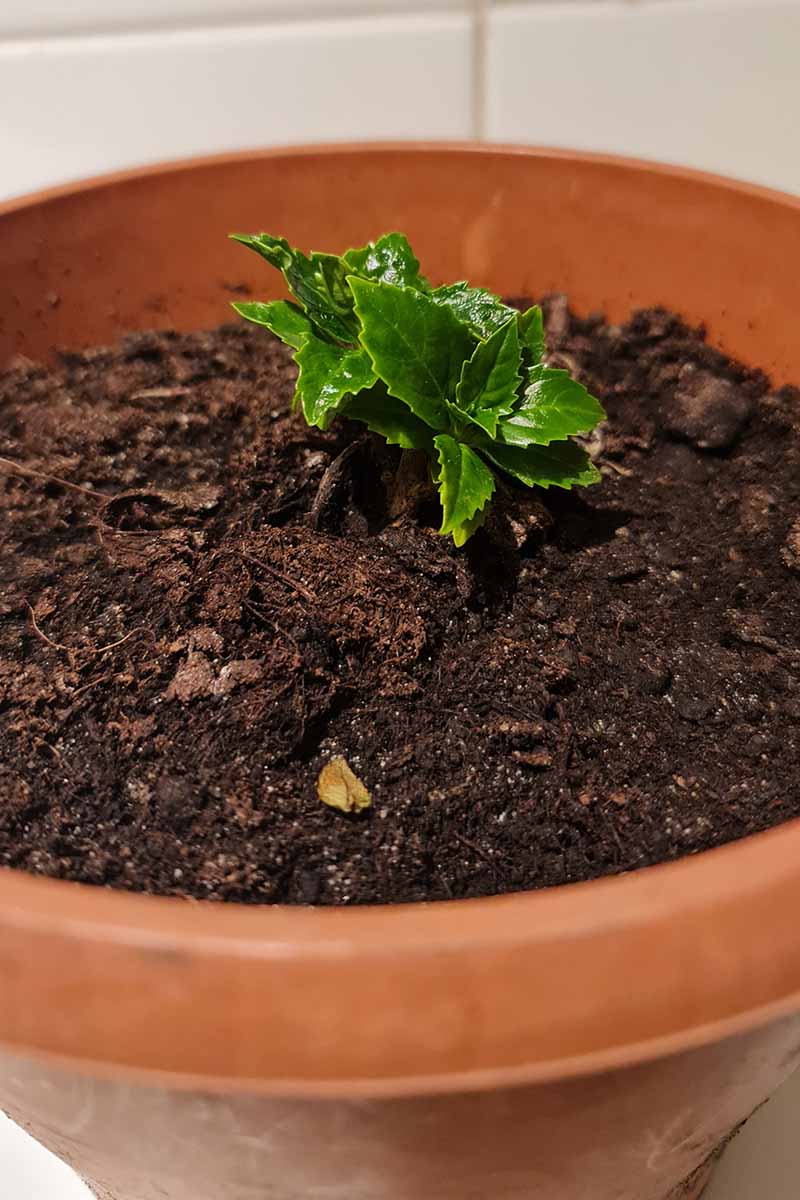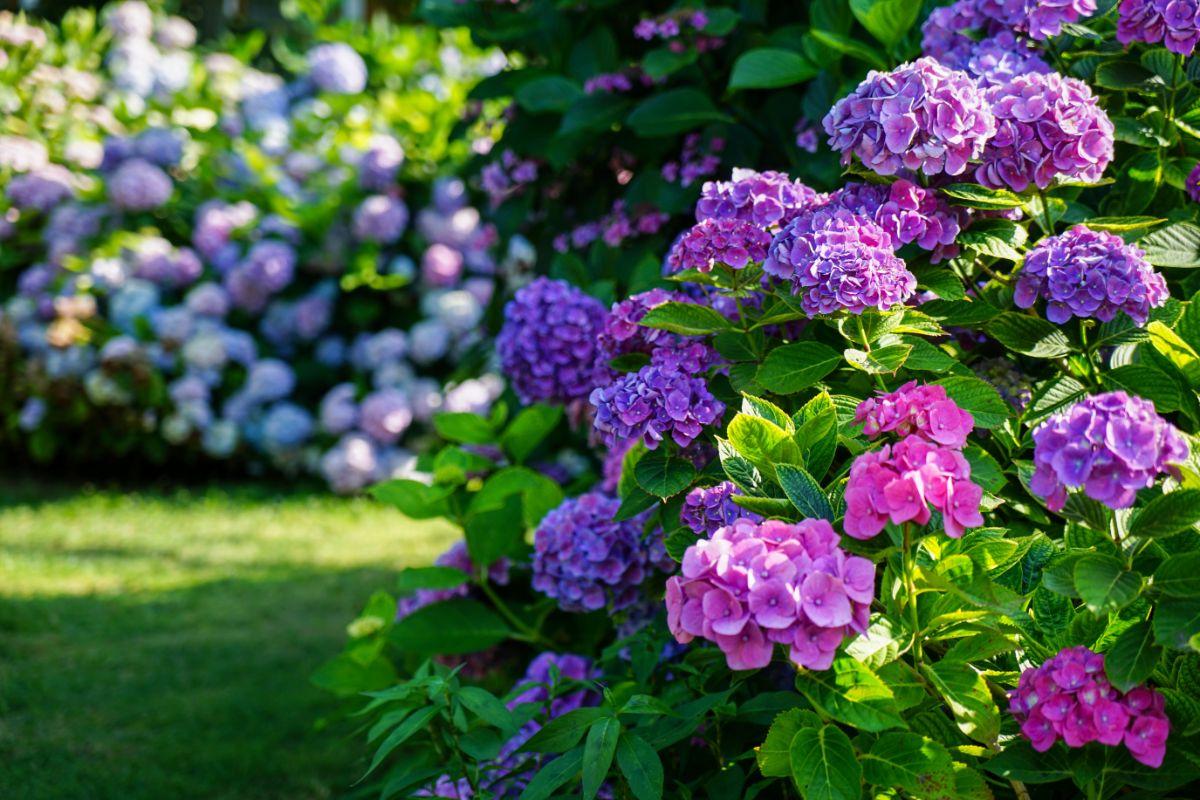Grow Your Own Hydrangeas From Seed: A Stepbystep Guide
Grow Your Own Hydrangeas From Seed: A Step-by-Step Guide
Hydrangeas are beautiful flowering shrubs that can add a touch of elegance to any garden. They come in a variety of colors, including blue, pink, purple, and white. And they're relatively easy to grow, even from seed.
If you're interested in growing your own hydrangeas from seed, here's a step-by-step guide:
1. Gather your supplies. You'll need hydrangea seeds, a seed-starting tray, potting soil, and a watering can. You may also want to use a rooting hormone, but this is not necessary.
2. Prepare your seed-starting tray. Fill the tray with potting soil and dampen it well. Be sure to use a potting soil that is specifically designed for seed starting.
3. Sow your seeds. Sow the hydrangea seeds on the surface of the potting soil. They don't need to be covered with soil.
4. Water your seeds. Water the seeds lightly and place the seed-starting tray in a warm, sunny location.
5. Germinate your seeds. Hydrangea seeds typically take about 2-4 weeks to germinate. During this time, keep the soil moist and the temperature warm.
6. Transplant your seedlings. Once the seedlings have grown their first set of true leaves, it's time to transplant them into individual pots. Use a pot that is at least 4 inches in diameter.
7. Care for your seedlings. Water your seedlings regularly and place them in a sunny location. You may also want to fertilize them once a month with a weak solution of fertilizer.
8. Harden off your seedlings. Once the weather has warmed up, it's time to harden off your seedlings. This means gradually exposing them to outdoor conditions. Start by placing them in a shady spot outdoors for a few hours each day. Gradually increase the amount of time they spend outdoors over the course of a week.
9. Plant your hydrangeas in the garden. Once your seedlings are hardened off, you can plant them in the garden. Choose a spot that gets full sun or partial shade. The soil should be well-drained.
10. Water and fertilize your hydrangeas. Water your hydrangeas regularly, especially during the first year after planting. You may also want to fertilize them once a month with a balanced fertilizer.
With a little patience and care, you can easily grow your own hydrangeas from seed. These beautiful shrubs will add a touch of elegance to your garden for years to come.
Hydrangeas are beautiful flowers that can add a touch of elegance to any garden. While they are often grown from cuttings, it is also possible to grow hydrangeas from seed. If you are looking for a challenge, growing hydrangeas from seed can be a rewarding experience.
The first step is to gather your supplies. You will need a flat of potting soil, a packet of hydrangea seeds, and a spray bottle. You may also want to purchase a rooting hormone, but this is not necessary.
Once you have your supplies, you can begin planting your seeds. Fill the flat of potting soil with a thin layer of soil. Sprinkle the hydrangea seeds on top of the soil, being careful not to bury them. Lightly mist the seeds with water.
Place the flat of seeds in a warm, well-lit location. Keep the soil moist, but not soggy. In about two weeks, you should see the first signs of germination. Once the seedlings have sprouted, you can thin them out so that there is one seedling per pot.
Once the seedlings have grown a few sets of leaves, you can transplant them into individual pots. Continue to water the seedlings regularly and fertilize them every few weeks. In the spring, you can transplant the hydrangeas into your garden.
Growing hydrangeas from seed can be a bit of a challenge, but it is also a very rewarding experience. If you are looking for a unique way to add hydrangeas to your garden, I encourage you to give it a try.
For more information about growing hydrangeas from seed, please visit .
FAQ of growing hydrangeas from seed
- What are the best conditions for growing hydrangeas from seed?
Hydrangeas need moist, well-drained soil that is rich in organic matter. They also need full sun or partial shade. The best time to sow hydrangea seeds is in the spring.
- Soil: Hydrangeas do not like soggy soil, so make sure the soil you use drains well. You can add compost or other organic matter to your soil to improve drainage.
- Sunlight: Hydrangeas need at least 6 hours of sunlight per day. However, they can also tolerate partial shade. If you live in a hot climate, you may want to plant your hydrangeas in a spot that gets afternoon shade.
- Watering: Hydrangeas need to be watered regularly, especially during the first year of growth. Water your hydrangeas deeply, so that the water reaches the roots.
- Fertilizer: Hydrangeas do not need a lot of fertilizer. You can fertilize your hydrangeas once a year in the spring with a balanced fertilizer.
- How do I sow hydrangea seeds?
To sow hydrangea seeds, you will need a container with drainage holes, potting soil, and hydrangea seeds.
- Fill the container with potting soil and press it down lightly.
- Sow the hydrangea seeds on top of the soil, spacing them about 1 inch apart.
- Cover the seeds with a thin layer of potting soil.
- Water the seeds lightly and place the container in a warm, sunny spot.
- The seeds should germinate in about 2-4 weeks.
- How do I care for young hydrangea plants?
Once your hydrangea seeds have germinated, you will need to care for them as you would any other young plant.
- Water the plants regularly, especially during hot weather.
- Fertilize the plants once a month with a balanced fertilizer.
- Protect the plants from frost and strong winds.
- Transplant the plants into the garden once they are large enough.
- What are some common problems with growing hydrangeas from seed?
Some common problems with growing hydrangeas from seed include:
- Seeds not germinating
- Plants not growing well
- Plants being attacked by pests or diseases
If your hydrangea seeds are not germinating, you may need to sow them in a warmer spot. If your plants are not growing well, you may need to fertilize them more often or water them more regularly. If your plants are being attacked by pests or diseases, you may need to treat them with an insecticide or fungicide.
- How long does it take to grow hydrangeas from seed?
It can take anywhere from 1 to 3 years for hydrangeas grown from seed to reach flowering size. However, the exact amount of time will vary depending on the variety of hydrangea and the growing conditions.
Image of growing hydrangeas from seed
- Hydrangea seed starting. This image shows a tray of hydrangea seeds that have been started indoors. The seeds are small and black, and they are evenly spaced out in the tray. The soil in the tray is moist and light-colored.

- Hydrangea seedlings. This image shows a group of hydrangea seedlings that have just emerged from the soil. The seedlings are small and green, and they have two small leaves. They are growing in a pot that is filled with moist potting soil.

- Hydrangea plant in full bloom. This image shows a mature hydrangea plant in full bloom. The plant is covered in large, white flowers. The flowers are arranged in clusters on the branches of the plant. The plant is growing in a garden bed that is filled with other flowers and plants.

- Hydrangea plant in a pot. This image shows a hydrangea plant that is growing in a pot. The plant is about 2 feet tall and has several branches. The leaves on the plant are dark green and the flowers are light blue. The pot is filled with potting soil and the plant is sitting on a patio table.

- Hydrangea plant in a garden bed. This image shows a hydrangea plant that is growing in a garden bed. The plant is about 3 feet tall and has several branches. The leaves on the plant are dark green and the flowers are pink. The plant is surrounded by other flowers and plants in the garden bed.

Post a Comment for "Grow Your Own Hydrangeas From Seed: A Stepbystep Guide"